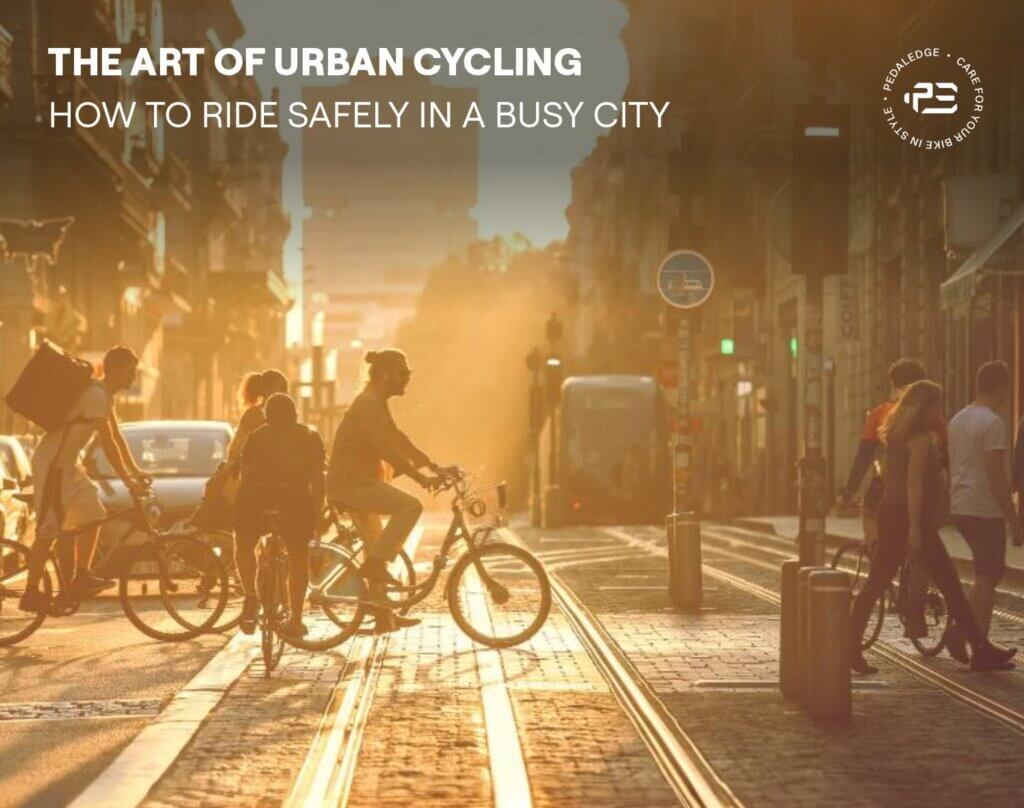
Joy Chetry
The Art of Urban Cycling: How to Ride Safely in a Busy City
Cycling in the city can be exhilarating, eco-friendly, and a fantastic way to stay fit, but it also comes with unique challenges. Navigating heavy traffic, avoiding hazards, and staying visible require skill, awareness, and the right gear.
As a bicycle accessories company, we understand the importance of safety and convenience when riding in an urban setting. Here’s how you can ride confidently and safely in a busy city.
Choose the Right Equipment
Your safety starts with the right equipment. Whether you’re commuting, running errands, or simply enjoying the ride, having the proper gear makes all the difference. Essential accessories for urban cycling include:
- Helmet: Meets safety standards and provides crucial head protection.
- Front and rear lights: Enhances visibility, especially at night.
- Reflectors: Placed on pedals and wheels to increase visibility.
- Bell or horn: Alerts pedestrians and drivers to your presence.
- Handlebar or helmet-mounted mirror: Helps keep track of traffic behind you.
- Sturdy U-lock or chain lock: Prevents bike theft when parked.
- Mudguards or fenders: Keeps you clean from road splashes.
Plan Your Route Wisely
A well-planned route can significantly improve your safety and riding experience. Use bike-friendly apps or maps to find roads with designated bike lanes and avoid high-speed traffic zones. Consider the following:
- Choose streets with dedicated bike lanes whenever possible.
- Avoid rush hour traffic by adjusting your schedule.
- Look for quieter, low-traffic routes for a smoother ride.
- Familiarize yourself with alternate routes in case of road closures.
Master City Cycling Techniques
Urban cycling requires more than just pedaling. Being aware of road dynamics and anticipating potential hazards can prevent accidents. Key techniques include:
- Stay visible: Wear bright or reflective clothing and use bike lights, even during the day.
- Ride predictably: Avoid sudden swerving or abrupt stops and maintain a straight line.
- Use hand signals: Clearly communicate your turns and stops to other road users.
- Keep a safe distance: Stay away from parked cars to avoid “dooring” accidents.
- Control your speed: Adjust your pace to react quickly to sudden stops, pedestrians, or obstacles.
Stay Alert and Aware
Urban roads are filled with distractions, and being alert and anticipating the actions of others can keep you out of harm’s way. Important safety tips:
- Make eye contact with drivers at intersections to ensure they see you.
- Be cautious at blind spots and around large vehicles like buses and trucks.
- Watch for pedestrians stepping onto bike lanes without looking.
- Stay aware of road hazards like potholes, tram tracks, and slippery surfaces.
Follow Traffic Laws
Understanding local traffic laws helps you ride safely and legally. Follow these basic rules:
- Obey traffic signals and signs just like motor vehicles.
- Use designated bike lanes when available.
- Yield to pedestrians and avoid riding on sidewalks where prohibited.
- Follow one-way street regulations unless a bike exception is marked.
Prepare for Weather Conditions
Weather conditions can affect your ride, so being prepared ensures safety and comfort. Consider these tips:
- Rain: Use waterproof gear, install fenders, and lower your speed to avoid skidding.
- Cold weather: Wear layered clothing and insulated gloves to stay warm.
- Heat: Stay hydrated, wear breathable fabrics, and use sunglasses to reduce glare.
Secure Your Bike Properly
Urban cyclists often worry about theft, but the right security measures can keep your bike safe. Follow these security practices:
- Use a high-quality lock and secure both the frame and wheels to an immovable object.
- Park in well-lit, busy areas with surveillance cameras.
- Consider GPS trackers or smart locks for extra security.
- Register your bike with local authorities if available.
Enhance Your Comfort
Comfort is crucial for an enjoyable city cycling experience. Accessories designed for urban cyclists can make your ride smoother and more efficient:
- Padded saddle: Reduces discomfort on longer rides.
- Ergonomic grips: Helps prevent hand fatigue.
- Cycling gloves: Improves grip and absorbs shock.
- Bike racks or panniers: Carries your essentials without straining your back.
Join the Cycling Community
Cycling is not just a mode of transportation; it’s a lifestyle. Connecting with fellow cyclists can enhance your experience and keep you updated on the latest safety tips and accessories. Ways to engage with the community:
- Join local cycling groups for shared rides and safety workshops.
- Participate in city bike events to learn more about urban cycling culture.
- Follow bicycle safety advocacy organizations for tips and legal updates.
Final Thoughts
Urban cycling is an art—one that requires skill, awareness, and the right accessories to keep you safe.
By equipping yourself properly, planning your route, staying aware, and following traffic laws, you can make your city rides more enjoyable and secure. Stay safe, stay visible, and keep pedaling toward a healthier, greener future!
FAQ’s
- Is cycling in the city safe?
Yes, urban cycling can be safe if you follow traffic laws, use proper safety gear, and remain aware of your surroundings. - What should I do if I get a flat tire while riding?
Carry a portable tire repair kit or a spare tube, and find a safe spot to fix it or walk to a nearby bike shop. - How can I make myself more visible to drivers?
Wear bright or reflective clothing, use front and rear bike lights, and make eye contact with drivers at intersections. - What is the best type of lock to prevent bike theft?
A sturdy U-lock or a heavy-duty chain lock is recommended to secure your bike properly. - Can I ride my bike on the footpath?
This changes from city to city, and different areas within the city as well. Always check local regulations and use bike lanes when available.